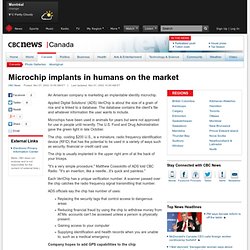Zoom
Trash

Enhancing Humans. Mark S.

Frankel and Cristina J. Kapustij Roger Clemens used to spend summer days basking in the gaze of adoring fans. Now he spends winter mornings under the glare of probing members of Congress. Marion Jones euphorically raised her hands in victory as she crossed the Olympic finish line in gold medal position five times. While high school, collegiate, and professional athletes are using artificial means to gain a competitive edge, ordinary Americans grab a cup of morning coffee to give a caffeinated boost to their day, and college campuses are populated with students using prescription drugs to increase their attention span and short-term memory to prepare for exams.
Humans have always sought to enhance themselves; ancient Olympians ate mushrooms for improved success in their events, and Renaissance women wore corsets to slim their waists. Today’s enhancement paves the way for future enhancement via emerging technologies. Better babies? Better living? Better athletes Longer life? Updatedversion120308. Human-enhancement-ethics. Human Enhancement and Nanotechnology. By Jacob Heller and Christine Peterson The long-term goal of nanotechnology is to be able to fully manipulate molecular and atomic structures.

Since humans are made of the same basic building blocks as the natural world, nanotechnology will probably enable the ability to change human tissues and cells at the molecular level. This will open doors in medicine thought impossible, and it will enable us to extend the length and quality of human life. It will also open the door to "enhancements" of the body — better IQ, appearance, and capabilities. These enhancements will undoubtedly benefit many, but they also bring up important moral, ethical, and legal questions that human society has not yet had to face. Nanotechnology would likely allow for an enormous array of human enhancements and medical treatments. There is a wide spectrum of positions that are taken in the human enhancement debate. Some worry that human enhancements may create undesirable pressures to enhance.
Bionic people: enhancement, bioethics and the politics of disability. Aimee Mullens in Matthew Barney’s CREMASTER 3 (2002).

Superhuman exhibition. Two current exhibitions, a workshop we recently organised at DaDaFest, and the ongoing controversy around “bladerunner” Oscar Pistorius’ inclusion in the Olympics have got me thinking about developments in human enhancement technologies and the impact on disability politics. The athletic success of double-amputee runner Oscar Pistorius has propelled this discourse into the mainstream. Some say the blades he runs on give him an unfair advantage, allowing him to push off the ground more efficiently than a normal human ankle.
This discussion of whether Pistorius, until now regarded as a “disabled” athlete, is in fact an “enhanced” athlete is an extraordinary development, and represents a major milestone in the development of prosthetics technology. Oscar Pistorius, Olympic athlete Pharmacopoeia, Cradle to Grave II (2003). Javier Tellez, Caligari und der Schlafwandler (2008). Floris Kaayk, Metalosis Maligna (2006). Miah2011EthicsHumanEnhancementBBVA. Viewcontent. Human_Enhancement_March_10. NSF_report. Human-enhancement. Microchip implants in humans on the market. An American company is marketing an implantable identity microchip.

Applied Digital Solutions' (ADS) VeriChip is about the size of a grain of rice and is linked to a database. The database contains the client's file and whatever information the user wants to include. Microchips have been used in animals for years but were not approved for use in people until recently. The U.S. Food and Drug Administration gave the green light in late October. The chip, costing $200 U.S., is a miniature, radio frequency identification device (RFID) that has the potential to be used in a variety of ways such as security, financial or credit card use.
The chip is usually implanted in the upper right arm of at the back of your triceps. "It's a very simple procedure," Matthew Cossolotto of ADS told CBC Radio. Each VeriChip has a unique verification number. ADS officials say the chip has number of uses: Company hopes to add GPS capabilities to the chip "Let's say you use the chip for your ATM.